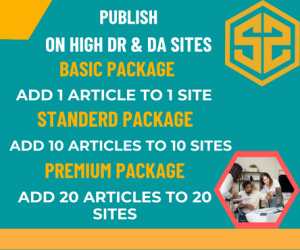Introduction
A well-wordpress website design can elevate your online presence, captivate visitors, and enhance user experience. Whether you’re creating a personal blog, an online store, or a business website, the right design elements can make a significant difference. This guide will walk you through the essential steps to designing a visually stunning and highly functional WordPress website.
Step 1: Choose the Right Hosting Provider
Before designing your WordPress site, you need a reliable hosting provider. Some popular options include:
- Bluehost – Great for beginners with 24/7 support.
- SiteGround – Offers excellent performance and security.
- WP Engine – A premium choice for managed WordPress hosting.
Step 2: Select a Beautiful and Functional Theme
Your WordPress theme determines the overall look and feel of your website. Consider these factors when selecting a theme:
- Responsive Design – Ensures a seamless experience on all devices.
- Customization Options – Allows you to tweak colors, fonts, and layouts.
- Speed Optimization – A fast-loading theme improves user experience and SEO.
Popular theme choices include:
- Astra – Lightweight and highly customizable.
- Divi – A drag-and-drop builder with advanced design capabilities.
- OceanWP – A versatile theme with numerous free and premium features.
Step 3: Customize Your Website with a Page Builder
Page builders make designing your site easier without requiring coding knowledge. Top page builders include:
- Elementor – A user-friendly drag-and-drop builder with a vast library of templates.
- Beaver Builder – Simple and effective for creating custom layouts.
- WPBakery – A powerful page builder with extensive design options.
Step 4: Optimize for User Experience (UX)
A stunning website is not just about looks; it should also be easy to navigate and user-friendly. Key UX design tips:
- Easy Navigation – Keep menus simple and intuitive.
- Readable Typography – Choose clear and professional fonts.
- Consistent Branding – Use a cohesive color scheme and design elements.
Step 5: Enhance Performance and Speed
Website speed affects user engagement and SEO rankings. Improve your site’s performance with these tips:
- Use a Caching Plugin – WP Rocket or W3 Total Cache can help.
- Optimize Images – Use tools like TinyPNG or Smush to compress images.
- Enable a Content Delivery Network (CDN) – Services like Cloudflare improve load times globally.
Step 6: Implement SEO Best Practices
To ensure your WordPress site ranks well on search engines, follow these SEO tips:
- Use an SEO Plugin – Yoast SEO or Rank Math can help optimize content.
- Optimize Meta Titles and Descriptions – Improve click-through rates.
- Use Clean URLs – Avoid long, cluttered URLs with unnecessary characters.
Step 7: Secure Your Website
Security is essential for maintaining a safe WordPress website. Implement these measures:
- Use SSL Encryption – Secure your site with HTTPS.
- Regular Backups – Use plugins like UpdraftPlus to back up your site.
- Limit Login Attempts – Prevent brute-force attacks with security plugins.
Step 8: Install Essential Plugins
Enhance your website’s functionality with these must-have plugins:
- SEO – Yoast SEO or Rank Math
- Security – Wordfence or Sucuri
- Performance – WP Rocket or Autoptimize
- Contact Forms – WPForms or Contact Form 7
- Social Sharing – Social Snap or Monarch
Conclusion
Creating a stunning WordPress website requires careful planning, the right tools, and attention to detail. By following this guide, you’ll be well on your way to designing a visually appealing, high-performing, and user-friendly website. Start your journey today and make your online presence stand out!

